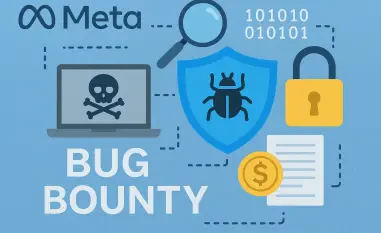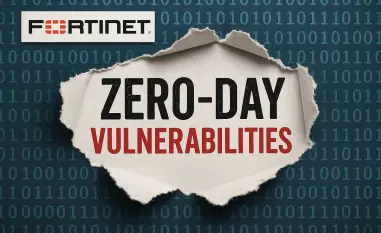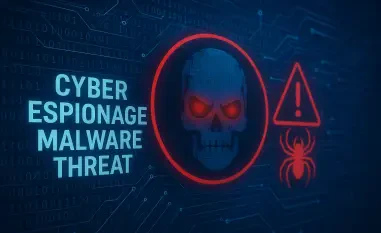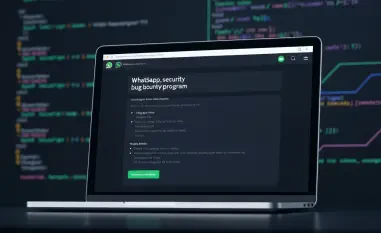Understanding the Cybersecurity Landscape
In an era where digital infrastructure underpins nearly every facet of modern society, the cybersecurity landscape faces unprecedented challenges, with critical systems increasingly under siege from sophisticated adversaries. Networking devices, often the backbone of industries like telecommunications, manufacturing, and education, have emerged as prime targets for malicious actors seeking to disrupt operations or steal sensitive data. The stakes are high, as a single breach in these systems can cascade into widespread operational failures or compromise national security.
The importance of equipment such as Cisco routers cannot be overstated, given their role in facilitating seamless communication and data transfer across vast networks. However, their ubiquity also makes them vulnerable, especially when outdated or improperly managed, to attacks from state-sponsored groups with advanced capabilities. These actors often exploit known flaws to gain unauthorized access, posing a persistent threat to global infrastructure stability.
Key players like Cisco Talos, a leading threat intelligence organization, alongside government bodies such as the FBI, play a pivotal role in identifying and mitigating these risks through timely alerts and actionable intelligence. On the other side, threat actors, including Russian state-sponsored groups, continue to refine their methods, leveraging both technical expertise and geopolitical motives to target critical systems. This dynamic creates a complex battleground where vigilance and rapid response are paramount.
The CVE-2018-0171 Vulnerability and Russian Hacker Involvement
Nature and Impact of the Flaw
A significant vulnerability, known as CVE-2018-0171, affects Cisco’s Smart Install feature, a flaw first identified and patched several years ago. This defect allows attackers to execute malicious code remotely or trigger device crashes, potentially disrupting entire networks. Despite the availability of fixes, the persistence of unpatched systems amplifies the danger, leaving critical infrastructure exposed to exploitation.
Globally, thousands of devices remain at risk, particularly those classified as end-of-life (EOL), which no longer receive security updates from the manufacturer. These outdated systems, often embedded in essential sectors, create a fertile ground for cyber campaigns aiming to compromise sensitive operations. The inability to update or replace such hardware exacerbates the challenge of securing digital environments.
Russian state-sponsored actors, notably the group Static Tundra—also known by aliases like Dragonfly, Energetic Bear, and Berserk Bear—have been linked to these exploitation efforts. Allegedly tied to Russia’s Federal Security Service (FSB), this group has demonstrated a particular focus on critical infrastructure, aiming to infiltrate systems that control energy grids, industrial processes, and communication networks. Their targeted approach underscores the strategic intent behind these cyber operations.
Tactics and Scale of the Attacks
Static Tundra employs highly sophisticated tactics to identify and exploit vulnerable Cisco devices, often using internet scanning tools like Shodan and Censys to locate systems still running the flawed Smart Install feature. By systematically mapping out exposed devices, these attackers gain a foothold to extract valuable configuration data and administrator credentials, paving the way for deeper network penetration. Such methods highlight the precision and automation driving modern cyber espionage.
Once access is secured, the group deploys advanced techniques, including malicious implants like SYNful Knock, which can survive device reboots and enable persistent remote control. Additionally, exploiting default or insecure SNMP community strings—sometimes as simple as “public”—allows attackers to gather further intelligence or manipulate device settings. These tactics ensure long-term access, often remaining undetected for extended periods.
The scale of this threat is alarming, with reports from the FBI indicating that configuration data from thousands of U.S. devices has already been exfiltrated, particularly from critical sectors. Historical incidents, such as a notable 2018 attack on data centers in multiple countries, reveal the global reach of these campaigns, where attackers hijacked systems to display provocative messages alongside operational disruption. This ongoing activity signals a sustained and evolving danger to international cybersecurity.
Challenges in Securing Legacy Networking Equipment
The prevalence of outdated or EOL Cisco devices presents a formidable obstacle in the fight against cyber threats, as many of these systems no longer receive security updates, leaving them defenseless against known exploits. Organizations across various industries continue to operate such equipment due to budget constraints or compatibility issues, inadvertently expanding the attack surface for malicious actors. This situation is particularly acute in environments where system downtime for updates is not feasible.
Operational challenges further complicate the issue, as industries reliant on legacy systems often face delayed patching cycles or prohibitively expensive hardware replacement costs. In sectors like manufacturing or energy, where continuous operation is critical, the risk of applying updates that might introduce instability often deters timely action. Consequently, vulnerabilities persist, providing adversaries with ample opportunities to exploit weaknesses.
Beyond technical limitations, broader cybersecurity hygiene remains a significant concern, with many organizations struggling to maintain accurate inventories of their devices or manage configurations effectively. Without a clear understanding of what equipment is deployed and its security status, mitigating risks becomes a daunting task. This gap in oversight allows threats to fester, underscoring the need for systemic improvements in device management practices.
Regulatory and Industry Responses to Cyber Threats
In response to the exploitation of vulnerabilities like CVE-2018-0171, joint warnings from the FBI and Cisco Talos have been instrumental in raising awareness and prompting action among affected organizations. These alerts detail the specific risks posed by unpatched systems and emphasize the urgency of addressing these flaws to prevent further compromises. Such collaboration between industry and government is crucial for disseminating critical threat intelligence.
Mitigation strategies recommended by these entities include promptly patching vulnerable devices, disabling the Smart Install feature where updates are unavailable, and planning for the replacement of EOL hardware. Additionally, monitoring networks for suspicious activity—such as unusual configuration changes or unexpected traffic patterns—can help detect intrusions early. These measures aim to reduce exposure and limit the potential damage from ongoing campaigns.
Compliance with established cybersecurity best practices is also strongly encouraged, alongside the importance of reporting incidents to platforms like the Internet Crime Complaint Center. Such reporting facilitates a coordinated response, enabling authorities to track threat patterns and provide targeted guidance. This collective approach strengthens the overall resilience of industries against persistent and evolving cyber risks.
Future Outlook: Evolving Threats and Cybersecurity Strategies
As cyber threats continue to evolve, the potential for other state-sponsored actors beyond Russian groups to exploit similar vulnerabilities in networking equipment looms large, posing a growing risk to global digital infrastructure. The tactics refined by groups like Static Tundra could easily be adopted by others, amplifying the need for proactive defenses across all sectors. This trend suggests an increasingly interconnected and contested cyber domain.
Emerging strategies to counter these risks include the adoption of advanced monitoring tools capable of detecting anomalies in real-time, as well as initiatives to accelerate patch deployment in critical industries. By prioritizing rapid response mechanisms, organizations can minimize the window of opportunity for attackers. Furthermore, fostering a culture of cybersecurity awareness ensures that personnel are equipped to identify and report potential issues swiftly.
Innovation, coupled with heightened regulatory focus and international cooperation, offers a pathway to mitigate long-term cyber espionage campaigns. Governments and industry leaders are increasingly aligning on standards and frameworks to enhance device security from design through deployment. This collaborative effort, if sustained, holds promise for building a more robust defense against the sophisticated threats of tomorrow.
Conclusion
Reflecting on the persistent danger posed by Russian hackers exploiting old Cisco router flaws, it becomes evident that unaddressed vulnerabilities like CVE-2018-0171 create significant risks for critical infrastructure worldwide. The detailed insights from joint FBI and Cisco Talos warnings illuminate the sophistication and scale of these attacks, revealing a pressing need for enhanced security measures across industries.
Moving forward, organizations are urged to prioritize actionable steps, such as investing in comprehensive network audits to identify and retire outdated equipment. Exploring partnerships with cybersecurity experts to implement continuous monitoring solutions has also emerged as a vital strategy to detect and thwart intrusions before they escalate.
Lastly, fostering a proactive mindset through regular training and adherence to evolving regulatory guidelines proves essential in staying ahead of adversaries. By embracing these forward-looking approaches, industries can better safeguard their digital assets against the ever-shifting landscape of cyber threats, ensuring resilience in an increasingly complex environment.













